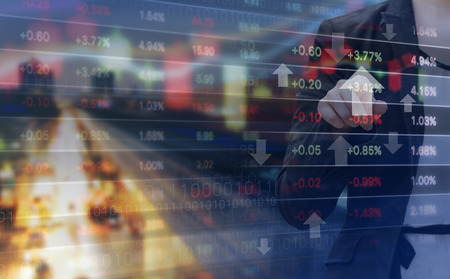Top Investor Stock: Tesla (TSLA)

Tesla’s big ambitions and disruptive potential have clearly struck a chord with top investors. This volatile auto stock boasts a “Very Positive” investor sentiment. Over the last 30 days, the best-performing investors have increased their TSLA exposure by no less than 10.8%.
But the Street does not share this optimism — quite the contrary. Right now, the stock has a hold analyst consensus rating with only six recent buy ratings. This is versus eight hold and nine sell ratings. Meanwhile, the $309 price target suggests big downside potential of 10% from the current share price.
Top Jefferies analyst Philippe Houchois has just slashed his 2018 revenue estimate for Tesla by 14%. He has also cut his fiscal 2018 Model 3 delivery forecast by 35% to just 175,000 units. In a bearish report (entitled “Another Curve Ball”) the analyst reiterates his “sell” rating and $240 price target (30% downside).
And he isn’t feeling overly impressed by CEO Elon Musk’s new merit-based compensation package. Houchois says the new deal sends “mixed messages” and is “overly incentivized on valuation multiples rather than financial performance.”
Top Investor Stock: Allergan (AGN)

Irish based Allergan Plc. (NYSE:AGN), maker of Botox, has a “Very Positive” signal from top-performing investors. Indeed, top investors have upped their exposure to this pharma giant by almost 3% over the last 30 days. Plus, investors who hold AGN on average dedicate 4.3% of their portfolio to the stock.
Perhaps these top investors are onto something. We can see that Barclays’ Douglas Tsao has just upgraded Allergan from “hold” to “buy.” The move comes with a bullish $230 price target (28% upside) up from $220 previously. Tsao’s shift in sentiment, after over three years on the sidelines, comes from the company’s market-leading Botox position. A survey of physicians revealed that patients are much more satisfied with Allergan’s Botox than rivals Dysport and Xeomin.
Overall the stock has a cautiously optimistic “Moderate Buy” analyst consensus rating. These analysts (on average) see the stock rising 18% to hit $212 in the coming months.
Top Investor Stock: Apple (AAPL)

Top investors still have faith in the market-leading power of iPhone maker Apple Inc.(NASDAQ:AAPL). Both in the last week and in the last 30 days, top investors have upped their Apple shareholdings (by 0.5% and 3.9% respectively). Plus Apple tends to make up a considerable chunk — 9% — of these portfolios.
However, the Street is not quite as bullish on AAPL stock as it used to be. The consensus is no longer “Strong Buy” but “Moderate Buy.” Analysts believe iPhone X sales peaked early and say Apple will guide for a lower March quarter than previously expected.
With this in mind, top Atlantic Equities analyst James Cordwell downgraded AAPL to “hold” with a $190 price target. He explains:
“This better than anticipated supply means that a greater proportion of demand was able to be served in the December quarter, leaving March quarter expectations (which were predicated on significant pent-up demand) for ~20% iPhone unit growth now looking somewhat aggressive (~20% iPhone unit growth).”
Top Investor Stock: Applied Materials (AMAT)

I am very bullish on chip equipment maker Applied Materials, Inc. (NASDAQ:AMAT). And I am not alone. Top investors are also piling into the stock, which also has 100% Street support right now. Indeed, in the last three months, no less than 11 analysts have published buy ratings on AMAT. Most promisingly, their average price target of $69 indicates upside potential of over 28%.
The No. 2 analyst on TipRanks, B.Riley FBR’s Craig Ellis has just met with AMAT management. He left the “upbeat” session with renewed conviction. Ellis explains why here: “We expect Memory spending sentiment to improve through 2018, and with that, we expect large-cap Semi Caps like AMAT (and KLAC and LRCX) to enjoy multiple expansion even as sell-side EPS grind higher.”
As for AMAT specifically, he says “AMAT’s vast portfolio breadth and large revenue scale positions mgmt well to frame industry spending potential and we sense CFO Durn remains justifiably upbeat.” Indeed, Ellis’ $71 price target indicates big upside lied ahead of 28%.
Top Investor Stock: Netflix (NFLX)

Netflix, Inc. (NASDAQ:NFLX) has just experienced a beautiful quarter. The company posted very strong earning results for Q4, suggesting that 2018 is going to be a key inflection year. And we can see from the screenshot above that investors love NFLX stock as much as they love its content. Not only are investors seriously upping their NFLX holdings, they also dedicate a relatively big portfolio proportion to this stock (4.9%).
A slew of price target increases show that the Street is also growing increasingly bullish on Netflix’s potential. Currently, the stock has a “Moderate Buy” analyst consensus rating.
Top RBC Capital analyst Mark Mahaney just ramped up his price target to $300 (11% upside potential). He says: “We believe secular demand for internet TV is ramping rapidly globally, and Netflix has positioned itself extremely well to benefit from this, with a compelling value proposition to consumers.” He notes that the company’s guidance for Global Streaming Revenue of $3.59B in Q1 2018 implies very impressive 43% Y/Y growth.
Top Investor Stock: First Solar (FSLR)

Top investors are snapping up First Solar, Inc. (NASDAQ:FSLR) stock — with shares up a whopping 118% over the last year. Indeed, this solar panel maker represents a savvy tax play according to Roth Capital’s Philip Shen. U.S. President Donald Trump looks set to impose a new 30% tariff on fully assembled solar panel imports from abroad. As a U.S. manufacturer, First Solar’s panels will be exempt from these new import taxes. The result: a golden opportunity for FSLR to boost U.S. sales and margins.
Apparently First Solar is already seeing sales soar as utility customers rush to complete orders before the tariff imposition.
From a Street perspective, this “Moderate Buy” stock has only 10% upside ahead. However Shen’s $80 price target suggests a more agreeable 19% growth potential.
Top Investor Stock: Incyte (INCY)

Investors aren’t giving up on pharma stock Incyte Corporation (NASDAQ:INCY) anytime soon. Shares may be down 20% in the last three months, but the stock is still trending high with the market’s top players. We can see that these investors are happy to take a low speculative position and see what unfolds.
The pharma sells Jakafi for bone marrow disorders and boasts a deep and promising pipeline, leading to sustained takeover speculation.
Luckily best-performing analysts are also very bullish on INCY, with seven recent buy ratings. Given the pullback in prices, these analysts now see the stock spiking a massive 60% to $150 in the year.
Take five-star Leerink analyst Michael Schmidt. He believes that concerns over Incyte’s cancer treatment epacadostat, its most advanced late-stage pipeline candidate, are overblown. INCY is developing epacadostat with Keytruda. He is reassured by management confidence in recent data and, as a result, reiterated his buy rating earlier this month.
Top Investor Stock: Nvidia (NVDA)

With Nvidia Corporation (NASDAQ:NVDA) shares exploding by an incredible 125% in the last year, it’s no surprise that top investors are feeling super bullish. In the last 30 days alone, the number of top portfolios holding NVDA is up by 4.4%. Not only that, these investors dedicate a sizable portion (almost 8%) of their portfolio to this fast-growing chip stock.
However, Susquehanna analyst Christopher Rolland isn’t convinced that the party can last. He calculates that NVDA benefited from approx. $500 million Ethereum-related GPU sales in Q4. This would boost Q4 results and near-term guidance. But ultimately, he sees substantial longer-term risks resulting from this unsustainable mining profitability.
In contrast, Vivek Arya — a five-star analyst — singles out Nvidia as a top pick. He ups his price target to $275 (11% upside). Arya believes there is 1) a large-scale upgrading opportunity 2) continued strength in crypto and 3) upside in high-performance computing. Note that Arya’s approach is paying off with an eye-dropping 94% success rate and 102% average profit across his NVDA stock ratings.
Top Investor Stock: Boeing (BA)

The world’s largest aerospace company, Boeing Co (NYSE:BA) has a “Very Positive” top investor sentiment right now. But with shares on a tear this year, upside potential seems relatively limited (according to the Street’s average price target). However, the stock does boast a “Strong Buy” analyst consensus rating. And top Cowen & Co analyst Cai Rumohr isn’t backing down anytime soon. He has just ramped up his price target from $320 to $415 (22% upside potential).
According to Rumohr: “Strong demand, a favorable production outlook, and above-average est. Tax Act benefits suggest 2018 CFPS [cash flow per share] near $23, ramping to $28 by 2020.” He explains that the $415 price target is based on a 2018 cash flow yield of 5.5%; and — the best part for investors — adds “we can envision a $455 potential valuation on 2019 cash flow.”
Top Investor Stock: Alibaba (BABA)

Chinese e-commerce king Alibaba Group Holding Ltd (NYSE:BABA) ticks all the boxes. Both top investors and the Street love this fast-growing stock. In fact, in the last eight months, BABA has received 100% buy ratings from the Street. And even with the stock soaring, analysts still see further upside potential ahead. Five-star Oppenheimer analyst Jason Helfstein has a $230 price target on BABA (7% upside).
He explains why he is such a fan of BABA here: “Alibaba remains one of our top picks in our coverage universe as the company continues to execute well in driving growth in core commerce, with a strong opportunity to improve monetization.”
Indeed, Helfstein sees big potential for Alibaba’s online-offline Hema retail stores. Customers can shop, dine and order grocery delivery from their mobile phones in-store and use Alipay to pay.
Helfstein anticipates Alibaba having 30-40 of its Hema stores in each of China’s major cities. This is a big deal when each hypermarket can serve up to roughly 50k consumers.
Source: Investor Place

